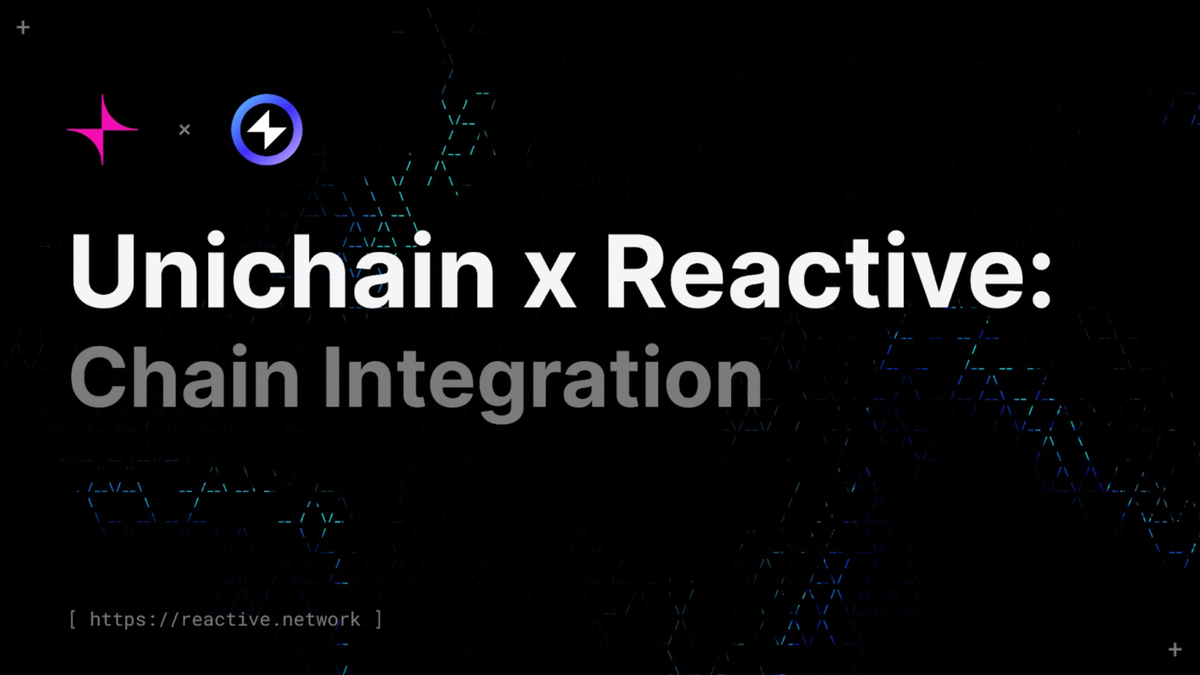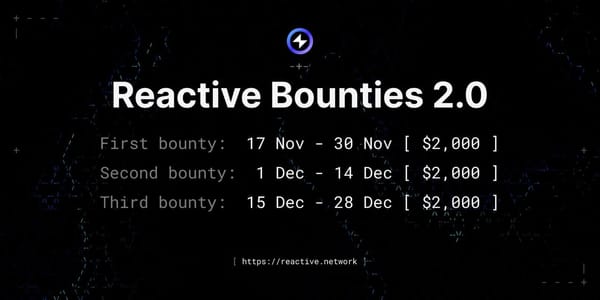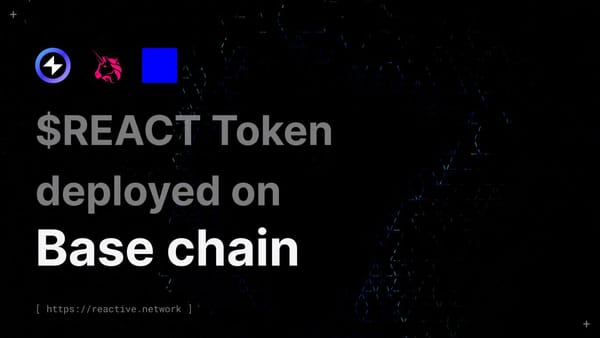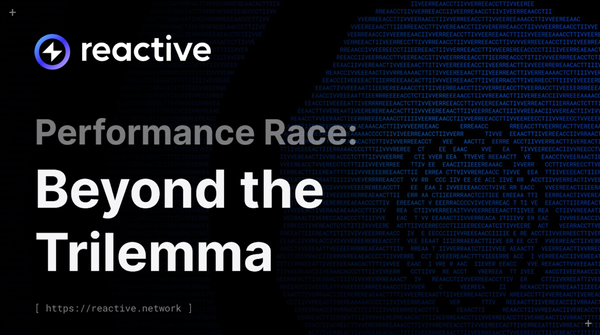Reactive Network Integrates with Unichain to Power Next-Gen v4 Hooks

Reactive integrates with Unichain Mainnet, developed by Uniswap Labs, as both an origin and a destination chain within the Reactive Network. Reactive adds to Unichain’s vision of a unified DeFi layer — a space where on-chain logic responds to real-time conditions. Unichain’s low-latency infrastructure becomes more than a settlement layer; it turns into an environment where contracts listen, react, and coordinate across the Superchain.
Uniswap V4 Hooks
Uniswap V4 introduces hooks — custom pieces of code that modify a pool’s behavior at key moments, like before or after swaps or when liquidity changes. In effect, hooks turn each liquidity pool into a programmable canvas, letting developers embed new logic without forking the protocol.
This transforms Uniswap from a fixed-function exchange into a modular DeFi platform. Hooks enable on-chain limit orders, dynamic fees that react to volatility, time-weighted liquidity, or integrations with lending and yield strategies — all within the same framework.
All pools live within one singleton contract, cutting gas costs and improving liquidity sharing. Paired with Unichain’s low-latency environment, V4 hooks make DeFi experimentation faster, cheaper, and more accessible.
In essence, Uniswap V4 turns the exchange into an open lab for liquidity mechanics — pushing DeFi toward infrastructure that’s as adaptable and composable as the internet itself.
Reactive in Action
To illustrate how Reactive contracts operate with Uniswap V4 Hooks, consider an example inspired by NewEra Finance’s hook-based architecture. In this scenario, TWAMM and oracle-based limit order hooks depend on precise timing to function optimally. Reactive contracts can automate these processes, removing the need for manual execution.
For instance, large trades in illiquid RWA pools could be finalized automatically — with executeTWAMMOrders() running at set intervals to complete time-weighted trades, while executeLimitOrders() responds to market conditions in real time using oracle data.
In this kind of setup, Reactive doesn’t replace hooks; it extends their functionality and shows what’s possible when execution becomes event-driven.
The potential outcomes include:
- Minute-level precision — consistent execution across pools
- Gas efficiency — batching and automation reduce costs
- Multi-chain reach — deployable across Ethereum, Arbitrum, Base, Avalanche, Polygon, Gnosis, and BNB Chain
- Improved UX — lower slippage, predictable execution, greater confidence for users
This example demonstrates how automation through Reactive contracts can address a common DeFi challenge — manual execution bottlenecks — while maintaining transparency and scalability. It highlights the broader opportunity for developers to build fully reactive DeFi systems on top of Uniswap V4 hooks.
Unichain in Detail
Unichain is an Ethereum Layer-2 network developed by Uniswap Labs, the team behind the Uniswap decentralized exchange. Built on the OP Stack and part of the broader Optimism Superchain, it’s designed as a fast, interoperable foundation for decentralized finance — a place where liquidity and applications can move freely across chains.
Unlike many general-purpose rollups, Unichain is purpose-built for DeFi performance. It has implemented 200ms “sub-blocks” using trusted execution environments, reducing latency for high-frequency trading and automated market makers.
Because Unichain is EVM-equivalent, developers can deploy Ethereum smart contracts without modification, using familiar tools like Hardhat or Foundry. This lowers the barrier to migration and allows DeFi protocols to run at higher speed without losing Ethereum’s composability.
Unichain is also the home of Uniswap v4, the latest protocol version introducing “hooks” — customizable logic that extends automated market makers in new ways. While Uniswap V4 is its flagship, the network’s broader ambition is to create a shared, high-performance execution layer for all of DeFi.
In the long view, Unichain represents Uniswap Labs’ move from building applications to shaping infrastructure. It continues Ethereum’s scaling story, not by replacing it, but by optimizing the rails beneath decentralized finance — turning liquidity itself into a cross-chain network effect.
Developer Setup Guide
Connect to Unichain Mainnet manually with this network information:
- RPC URL — https://mainnet.unichain.org
- Chain ID — 130
- Gas Token — ETH
- Block Explorer — Uniscan
- Sequencer Location — us-east-2 (Ohio)
For more details, see Unichain Docs.
About Reactive Network
Reactive is an EVM-compatible execution layer for dApps built with Reactive contracts. These contracts differ from traditional smart contracts by using inversion-of-control for the transaction lifecycle, triggered by data flows across blockchains rather than by direct user input.
Reactive contracts listen for event logs from multiple chains and execute Solidity logic in response. They can determine autonomously when to transmit data to destination chains, enabling conditional cross-chain state changes. The network delivers fast and cost-effective computation via a proprietary parallelized EVM implementation.
Website | Blog | Twitter | Telegram | Discord | Reactive Docs
Build once. React everywhere — now on Unichain.





